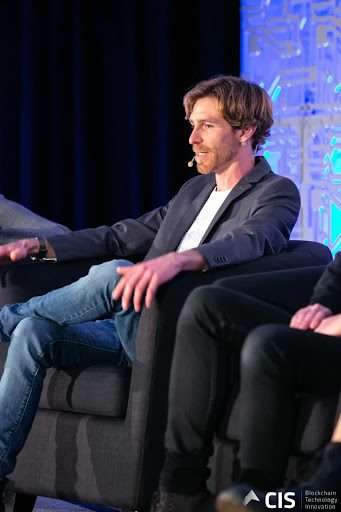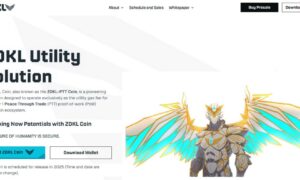As Bitcoin is increasingly taking over the exclusive place of gold, the wave of excitement surrounding Decentralized Finance never faced a downward incline – in part, due to the progressive popularity of the novel trends like NFTs. This asset class transformed to become a technically-advanced way of preserving unique pieces of data, without sacrificing the ownership rights and giving an authentic credit to the possessor. This peculiar characteristic makes it a right fit for a broad variety of fields: from the gaming and music industry to the works of fine art, further expanding to embrace popular market brands. Although the bright prospects open up in front of NFTs, there’s one that’s one barrier casting shadow upon it: the amount of scams inflowing the field makes it hard to generate and maintain the appeal of the average investor.

To bring the lack of transparency among NFTs to an end, BLOCKS.io came up with its own answer to the problem: introducing the processes of verification and authentication of ownership, this project aims to combat the spread of counterfeited NFTs that are progressively becoming the new business paradigm across the blockchain space. The method applied by BLOCKS is based on the introduction of an additional verification layer: a BLOCKS registry stores encrypted metadata which is then able to generate a blockchain-based certificate of authentication for the lifetime of NFT. This all fits well with a general conception of BLOCKS.io: being a legally-registered DAO enterprise, it intends to leverage the potential of digital assets by instructing the companies on law-compliant methods of blockchain transition, thus preluding the new epoch of decentralization founded on the values of autonomy and self-governance.
Being intrigued by the change BLOCKS.io could bring to the world of Decentralized Finance, we approached DAO Developer Adam Wolfe for a Q&A session.
The initiative of undertaking the blockchain migration process by BLOCKS.io is a highly ambitious one. Which aspects are instrumental for success in carrying this aspiration out?
Answer: Corporate partnerships and individual developers could both play major roles in the success of BLOCKS. There are a number of creative use cases for on-chain data storage and simultaneous transfer of value. BLOCKS is intended to be deployed on multiple EVM compatible blockchains so it can meet partners wherever they happen to be. It is going to take a lot of support from the BLOCKS DAO community to articulate the value proposition to potential partners and cut through the noise.
In your understanding, what lies behind a relatively low current pace of mainstream blockchain adoption? How does BLOCKS.io change that?
Answer: I think the sheer number of blockchain projects on the market are causing a bit of analysis paralysis from blockchain curious businesses. Mission critical business applications need to be built on trusted and secure networks. Many new projects just don’t have the history to guarantee robust enough levels of security. I think BLOCKS shines here because the BLOCKS smart contract can be deployed on many time tested blockchains. This provides businesses with a range of options for where to deploy their blockchain project.
Your decision to resist the spread of NFT counterfeit is clear, but still: why have you decided to direct efforts of BLOCKS.io on this niche trend?
Answer: NFTs are proliferating rapidly. There are additional use cases popping up for NFTs also like financial NFTs, fractional ownership of assets. The rapid adoption of NFTs has also exponentially increased opportunities for fraud. It will be increasingly important to have 3rd party verification solutions like “Verified by BLOCKS” to help mitigate fraud, spoofs and help facilitate trusted interactions related to NFTs and the assets they represent.
How does BLOCKS accomplish this mission? What are the main phases you could outline within the NFT verification process?
Answer: As an example for phase one, BLOCKS can facilitate a light on-chain verification process. This light verification happens at the time of minting an NFT and involves creating a unique hash of data that gets stored within a BLOCKS transaction. It doesn’t however retroactively verify an NFT that has already been minted. Phase two will require a web application where NFT creators can access a dashboard in order to retroactively verify NFTs using BLOCKS. The dash will track a creator’s verified NFTs. The application will also provide an API where 3rd parties can check the verification status of NFTs that have been retroactively verified by BLOCKS. This process will ensure that the creator is associated with the contract address being verified. This data will also be hashed and stored on-chain via a BLOCKS transaction.
From the technical point of view, what were the main challenges for bringing this solution to realization?
Answer: BLOCKS is relying on well defined token standards, so technical challenges with the token were minimal. One technical challenge is ensuring that 3rd party contracts that interact with the BLOCKS contract are secure. The BLOCKS DAO community also needs to try and find a message that resonates with the market related to the various BLOCKS use cases. Many businesses have their own development teams, but they may not be well versed in blockchain. We will need to continue to develop learning materials to help onboard businesses and developers.
More generally, what is the BLOCKS Network all about? How does it leverage the power of Smart Contracts for its solutions?
Answer: Most new projects are developing a proprietary or forked blockchain solution. We felt that this limited our solution to one blockchain, and additionally, the scaling limitations and security risks of running on one blockchain. BLOCKS opted to become a blockchain agnostic solution that could sit on top of any proven protocol. In this way BLOCKS can deploy on any network that a potential partner may want to be. BLOCKS also supports building a network of operator smart contracts that act like building blocks to extend functionalities for token holders and business users. BLOCKS can expand horizontally across blockchains or even vertically on one blockchain through operator contracts. The goal was to attain versatility and scalability by being blockchain agnostic and focusing on smart contracts.
What is the essence behind BLOCKS Builders Modules – and how do they operate?
Answer: The Builders Modules are mini apps that act as proof of concepts for developers who wish to build on BLOCKS. These apps connect to the BLOCKS smart contract and can be downloaded and run locally from GitHub. BLOCKS Builders Modules are a great starting point for developers who want to get involved in the project.
Talking about the native token of BLOCKS: which specifics of asset allocation are essential for the community to be aware of?
Answer: The BLOCKS DAO has a well-defined tokenomics plan and emissions schedule in place. Allocation of assets is directed by the community through proposals and voting.
What are the partnerships BLOCKS takes the most pride in? Are there any announcements on future ones yet?
Answer: HUMBL, Inc. has been a great partner for BLOCKS. They have run with many of the proof of concept ideas and implemented them into live products. This includes “Verified by BLOCKS” on the NFT platform. Another unique use case is how their Pay app will manage BLOCKS deposits from external sources. The process will utilize BLOCKS data in a unique way to credit users in the app. We can also mention BizSecure and their plans to integrate with the US Air Force. Then there is the LABS project which will leverage BLOCKS across many different verticals in LATAM.
The DAO community has also self-organized a biz dev unit to help onboard new partners. This will help the DAO get a feel for the types of businesses that are blockchain curious and will help kick off pilot integrations.
Finally – Could you share your plans for 2022? How does it go in line with the general BLOCKS vision of the future?
Answer: BLOCKS intends to help partners go live integrating BLOCKS into new projects. The roadmap also includes building out the BLOCKS Registry to further develop BLOCKS verification and NFT data searches.
I think there will also be a big push to get individual developers involved. There is a great opportunity to incentivize individuals to build applications integrating BLOCKS. There may be use cases of BLOCKS we haven’t thought of that would-be entrepreneurs can build businesses on.

































